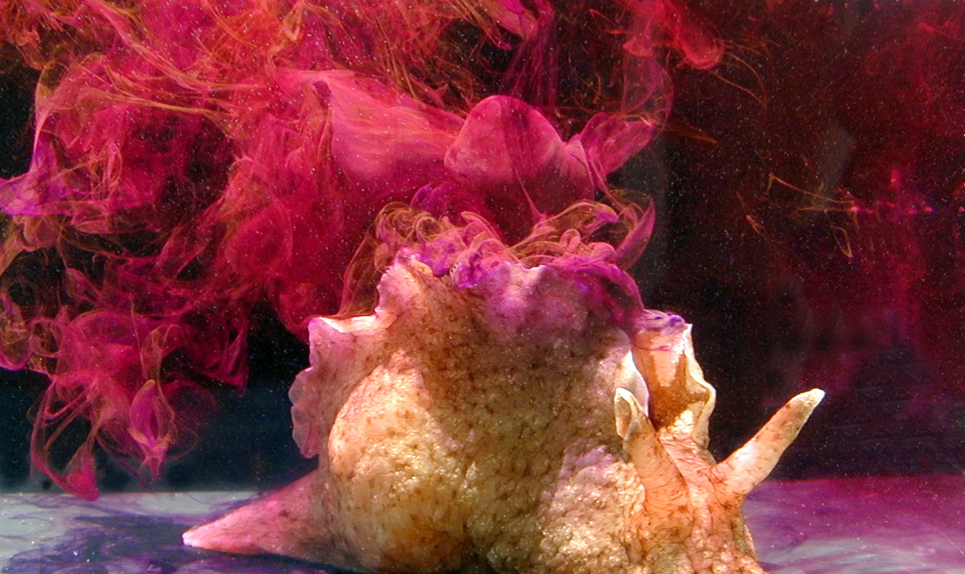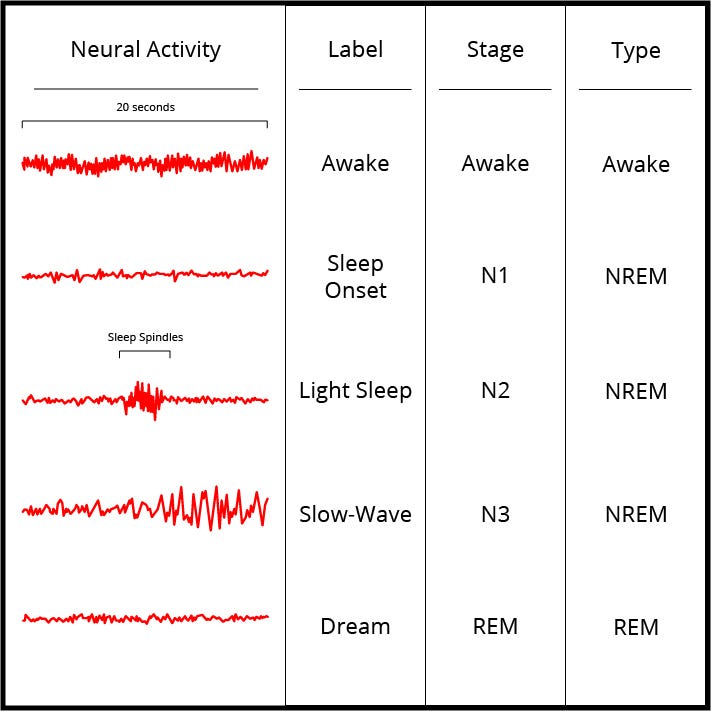Memory, Neuralink, and Immortality of Consciousness
In a study published on May 14 in the journal eNeuro, researchers at UCLA described how they removed memories from one sea snail and injected them into another sea snail in the form of RNA.


Nectome, a Silicon Valley startup, believes that one day they will develop the technology necessary to completely copy the physical structure of a human brain and be able to recreate it, along with the consciousness of the person it belonged to.
And then there is Neuralink, one of Elon Musk’s ventures. Neuralink doesn’t have an ultimate goal of “copying” or “reproducing” a human mind. They want to focus on the logical next steps: true interfaces between the biological human brain and the machines which will enhance and improve us.
Despite how much we know of the brain’s anatomy and how it interfaces and commands our own bodies, we actually know very little about what actually makes up our “selves”. Consciousness — its nature and its origin — is an open-ended question with equal footing in hard science and philosophy. We don’t even really have a grasp on what makes up the basic building blocks of self: memory. The theoretical idea of the engram as the biochemical or biophysical process by which memory is encoded goes all the way back to German evolutionary biologist and memory research Richard Semon at the turn of the 20th century. After over one hundred years, we still don’t know just what the engram is.
What does it mean to be conscious?
Consciousness itself is a tremendous mystery. In a 2005 article a group of scientists argued that we should have an agreed-upon definition of what consciousness is. They came up with 17 properties that they believe signify consciousness:
1: Brain activity is irregular as measured by EEG in a conscious individual, between 20 and 70 electrical oscillations per second.
2: A connectivity loop is needed between the thalamus and neocortex of the brain. If the thalamus is sufficiently damaged, an individual loses consciousness.
3: Neural activity associated with complex tasks engages widely distributed parts of the brain.
4: Consciousness seems to require a varied array of sensory input in order to develop.
5: Information must be fairly novel and complex otherwise it quickly fades from conscious awareness.
6: Consciousness is centered on the present and active, ongoing sensory stimulation.
7: Consciousness is internally consistent.
8: Consciousness is limited in capacity, just like an individual’s attention or memory.
9: Action and perception are unified and coherent in a conscious individual.
10: Self-awareness, at least consisting of one’s place in the world amongst everything else and one’s individuality.
11: A conscious individual must be able to indicate a subjective experience.
12: Consciousness is a private experience bounded within a single individual.
13: Consciousness has a structure of a central focus (self) surrounded by a fringe sense of vague uncertainty.
14: Consciousness seems to improve learning.
15: Once it exists, consciousness can continue independently from sensory input.
16: A conscious individual is capable of relating to other consciousnesses or objects and understanding their places in the world.
17: Consciousness allows an individual to plan and make decisions to overcome problems that basic reflexive behavior cannot.
Philosophers, just like the scientists who compiled the above list of qualities, also struggle to define consciousness in a way that is surefooted. In The Blackwell Companion to Consciousness, the authors write:
Anything that we are aware of at a given moment forms part of our consciousness, making conscious experience at once the most familiar and most mysterious aspect of our lives.
Familiarity and mystery are as definitive of consciousness as any other words. In philosophy, the existence of consciousness is seen as proven in a logical sense because “it”, whatever “it” may be, can seemingly be absent. This is also proven in medicine when we can physically measure the engagement of a person’s brain and the electrical activity therein: Where nothing is seen to be happening, there also seems to be a total lack of consciousness.
States of Consciousness
But consciousness isn’t just a binary setting in humans. There are numerous states of consciousness, across a continuum. We are constantly shifting between states of lower and higher awareness: Our consciousness is either focused more outwardly on sensory stimuli and perceptions, or we are focused inwardly on our thoughts and reasoning. Living “in the moment” and having a fun time out at a party or performing high adrenaline activities tend to be on the lower-awareness side, while activities like meditation/mindfulness practice and writing are examples of a more high-awareness state.
Other states of consciousness which challenge our understanding of what it means to be conscious include hypnosis, sleep, and various states induced by drugs.
Hypnosis is induced when a person’s awareness is collapsed onto a single focus, essentially a reduction in peripheral awareness that opens the individual up to a susceptibility to suggestion. Not everyone is equally as susceptible to hypnosis. Those who are, however, experience changes in brain wave state as measured by electroencephalograph (EEG). These brainwaves are measured in cycles per second, ranging from a high of ~40 to the lowest range of ~1–4 cycles per second. While active and fully awake people exhibit a beta brainwave pattern, and those in a restful state show an alpha wave pattern, those who are hypnotized fall into a theta wave pattern, which is similar to what is witnessed in individuals who are dreaming or meditating. The very deepest hypnotic states put the subject into a delta wave pattern, equivalent to a deep and dreamless sleep.
Sleep itself is a multi-tiered state of consciousness:


Sleep seems to be a biological requirement for organisms with the brain complexity to experience awareness and consciousness. It provides a vital period of rest and recuperation for our brains . The brain is the most resource-hogging organ in the human body, accounting for at least 20 percent of our caloric expenditure per day, an is in constant multitasking use every second of our lives. Going without sleep for as little as a single 24 hour day-night cycle can have noticeable deleterious effects on us physically and biochemically. Extended sleep deprivation has been shown to lead to increased diabetes risk, weight gain, higher blood pressure, decreased immune system function, decreased sex drive, poorer balance, increased risk of accidents, higher heart disease incidence, mood swings, memory problems, and trouble with focus and concentration.
And then there are drug-induced states of consciousness. Drugs like insomnia medications, barbiturates and anesthetics can place us in sleep-like states, while hallucinogenic compounds actually place an individual into a heightened state of consciousness, which can be seen in this graphic representing vast changes in brain activity while on various substances:


What happens when we die?
Beyond actually defining what consciousness is lies the problem of what happens when it all seemingly goes away upon death. “Brain death” is officially recognized as:
…the irreversible loss of all functions of the brain, including the brainstem. The three essential findings in brain death are coma, absence of brainstem reflexes, and apnoea…A patient determined to be brain dead is legally and clinically dead. — The Diagnosis of Brain Death
When this happens, there is nothing we can measure that indicates any level of consciousness whatsoever, and for all intents and purposes this lack of awareness is irreversible. Most often, brain death occurs when extreme damage is caused to the brain itself, either via trauma or prolonged oxygen starvation and cell death. Based on this evidence, the self, and the consciousness and awareness that comes with it, seems to exist in the structure of the brain. When the physical clump of neurons and lipids that is “us” becomes ruined, “we” no longer exist. In effect, the brain is a hard drive, and when it’s destroyed everything it contained goes with it.
However, if that is the case, then consciousness may be able to be reproduced. Can the mind be somehow downloaded or otherwise copied?
“A complete map of the human brain containing detailed information about each neuron and synapse would occupy about 20,000 terabytes and require 1016 flops (floating point operations per second) of processing power to function. Currently, only the world’s fastest supercomputer possesses the capability of crunching that many numbers in a second.”
If what makes a person a person is all in the structure of the brain, many scientists feel that this is essentially possible, and with enough advances in technology we will eventually be able to make a copy of ourselves.
When the structure collapses — if the structure IS the person — then the person is gone for good. So remaking the structure would not be bringing the lost consciousness back from “the dead”. Instead, it would merely be creating a clone of that individual with the memories and personality equivalent to that individual whenever the complete copying of her/his brain occurred.
If there is a “missing ingredient” that results in consciousness and that is responsible for making you “you”, something that cannot be recreated by just rebuilding an exact structure of neurons, we may be out of luck when it comes to these options. We may find we can copy the structure and information of a mind, but when we “boot” it up all we see is hard data, and a complete lack of anything like self-awareness.
Elon Musk’s Neuralink initiatives aim to create implantable interfaces between the brain and computers. The early goals will be to offer treatments for brain and nervous system disorders, with the eventual path leading to enhancing normally-functioning brains — i.e. increasing memory and processing speed, adding built-in cloud and internet access, and expanding our senses. Though these dreams are admirable and will contribute to the well-being of many people currently suffering from degenerative conditions and mental health issues, there is another objective that Neuralink’s efforts will end up contributing greatly to. In order to do what the Neuralink team wants to achieve, the technology required will also be advanced enough that it will likely shed greater light on our understanding of consciousness. For the first time ever, scientists will be able to study and interact with the human mind in ways that allow them to correlate physical, chemical and electromagnetic interactions all at once.
None of this really takes into consideration the concept of the soul, either. To do so takes us out of the realm of what may be scientifically possible. If a consciousness is an immortal soul that leaves the body upon death and enters some other realm, logic would dictate that there would be no retrieval of said soul. At the same time, looking at the science as it now stands, a retrieval still doesn’t seem possible — At best, we might hope to clone a consciousness. Neuralink’s mission, and the mission of others involved in brain-machine interfaces, may offer the ultimate key to being able to bridge the gaps that seem unbridgeable now.
For consciousness to ever be immortal, it likely needs to remain uninterrupted, sustained and continuous. We will need to redesign our humanity in a way that results in a zero-downtime consciousness, and a hybrid computer existence may be our answer.
Thank you for reading and sharing!
